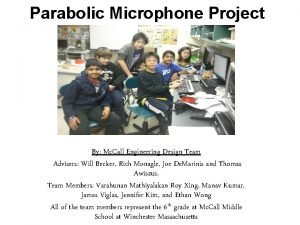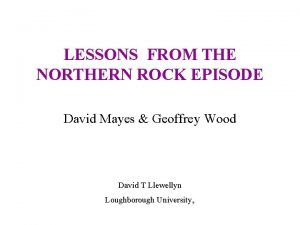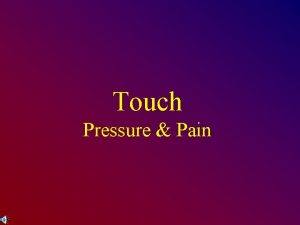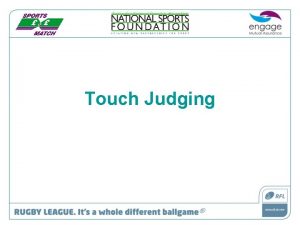Touch Pain Juanita Mayes and Shanikka Hayes Touch










- Slides: 10

Touch & Pain Juanita Mayes and Shanikka Hayes

Touch Essential to our development Our “sense of touch” is actually a mix of at least four distinct skin senses- pressure, warmth, cold and pain. Parts of the skin are sensitive to pressure, warmth, cold and pain Sunburns shows how skin is sensitive to heat

Touch Affecting Babies Premature babies gain weight faster and gone home sooner if they are stimulated by hand massages.

Still Not An Explanation!!! There is no simple relationship between what we feel at a given spot and the type of specialized nerve ending found there, only pressure has plentiful receptors.

Pain is your body’s way of telling you something has gone wrong. It’s rare for people not to have the ability to experience pain. If this occurs you can die at early age or signals are not sent to your brain.

Carrie Armel and Vilayanur Ramachandran Carrie Armel & Vilayanur Ramachandran did an experiment to prove that pain is a property not only of the senses- of the region where we feel it- but of our brain and our expectations as well.

Melzack and Wall theorized that the spinal cord contains a neurological “gate” that either blocks pain signals or allows them to pass onto the brain. The spinal cord contains small nerve fibers that conduct most pain signals, and larger fibers that conduct most other sensory signals.

Quick Facts 7 in 10 amputees may feel pain or movement in nonexistent limbs The larger the fiber=closes the pain gate (no pain) The smaller the fiber=open neural gate (feel pain) Chronic pain will never stop There are more memories of pain than pain ever experienced

More Quick Facts The brain creates pain. Pain effects people of all ages. People perceive more pain and endure it less when others also seem to be experiencing pain( Symbaluk & others, 1997).

http: //video. yahoo. com/watch/455963 1/12209991



















